One can legitimately argue that Rory McIlroy began to fulfil his immense promise with his victory in the 2009 Dubai Desert Classic, where he held off Justin Rose by a shot after nearly surrendering a six-stroke lead over the final six holes. His maiden triumph on the then European Tour at age 19—after two playoff losses the previous year—made him the seventh-youngest winner as he outlasted a field that included close pursuers Henrik Stenson, Paul Casey, Martin Kaymer and Louis Oosthuizen.
McIlroy rose to 15th in the world and immediately received a sponsor’s exemption into the Honda Classic on the PGA Tour. The young Ulsterman, who finished third in just his second professional start in late 2007 on the way to becoming the youngest affiliate member to earn his European Tour card, was becoming more of a known entity, though mostly still confined to Europe. Then he made the cut in all four majors in 2009 with debut finishes of T-20 in the Masters, T-10 in the U.S. Open and T-3 in the PGA Championship.
When the calendar turned to 2010, McIlroy was high on the radar for Colin Montgomerie’s European Ryder Cup team. What happened next was, well, not much of anything.
He posted a couple of top-10s in Europe but struggled in America, where he accepted PGA Tour membership and intended to play a full tour schedule of at least 15 events. He finished no better than 46th in his first four U.S. appearances with consecutive missed cuts at the Shell Houston Open and the Masters. Only twice in 12 rounds did he record a sub-70 score, and just barely.
His back was sore and his mood was sour, so he retreated home to Holywood, Northern Ireland, and did not plan to return to the States until the Players Championship after his 20th birthday. He changed his mind, however, and showed up at the Quail Hollow Championship in Charlotte, North Carolina, the week before the Players, and this is the juncture where Rory McIlroy truly arrived.
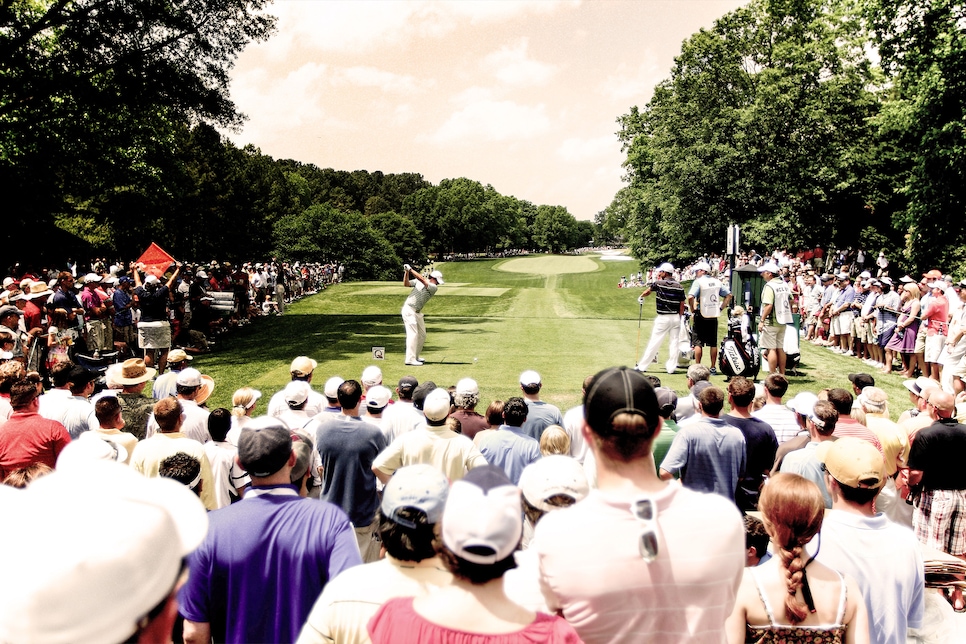
McIlroy, in his first year playing full-time on the PGA Tour, wasn’t originally planning to compete in the 2010 Quail Hollow Championship after struggling in early U.S. starts.
Quail Hollow Club hosts its second PGA Championship next week, and McIlroy, who turned 36 on May 4, is a heavy favourite to pick up the second leg of the calendar Grand Slam after securing the career variety last month with his playoff win over Rose in the 89th Masters. McIlroy, No. 2 in the world behind Scottie Scheffler, owns four wins at Quail Hollow among 29 PGA Tour titles. That includes a five-stroke smackdown of an elite field in one of the few signature events Scheffler didn’t win in 2024.
“It’s one of my favourite places in golf,” McIlroy said recently. “I’m always going to have a certain feeling about Quail Hollow because it was my first tour win. Being there is always special.”
That 2010 edition became the tournament in which McIlroy burnished his credentials as more than just a star. He showed that he was a very dangerous man capable of an uncanny scoring ability. He’d win by four shots with a Sunday 62, a feat made all the more impressive by the fact that nearly missed the cut.
It all started with a 4-iron to six feet at the par-5 seventh hole at Quail Hollow late on Friday afternoon. The date was April 30. A bushy-haired McIlroy executed a bit of magic that changed more than his season.
Still nursing a bone bruise in his lower back that had been plaguing him for months, McIlroy was outside the cutline until he reached the green in two mammoth strokes at the seventh (his 16th hole of the day) and rolled in the eagle putt. His assessment of that approach shot was not hyperbole.
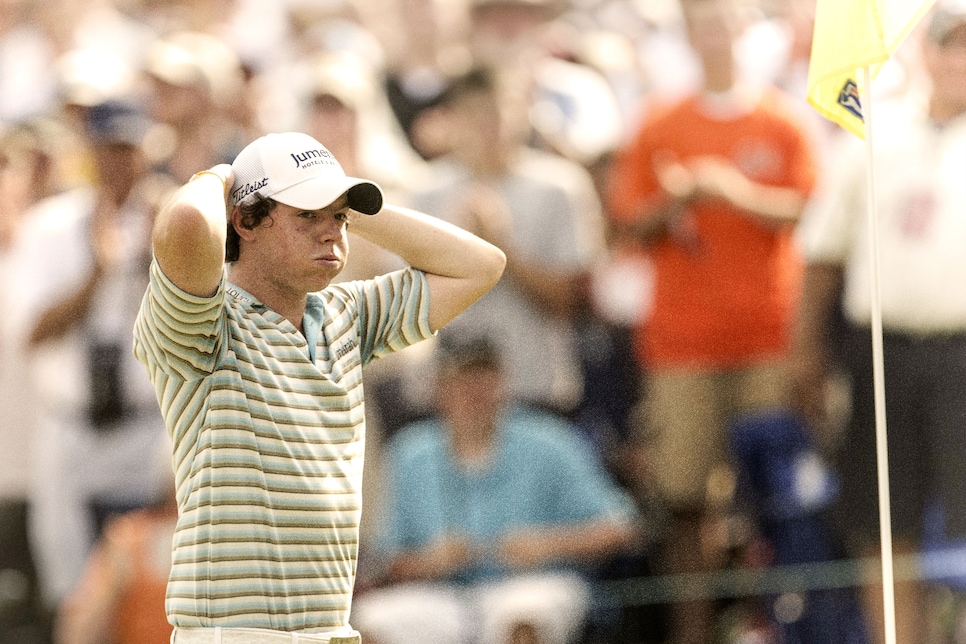
McIlroy needed to rally in the second round just to make the cut on the number.
“Most important shot of the year, to be honest,” he said after it enabled him to shoot 73 and make the cut on the number at one-over 145. He stood nine strokes behind the leader, Billy Mayfair, but at least he wasn’t going to find himself standing on the range at TPC Sawgrass over the weekend instead.
A Saturday 66 playing in the day’s third group with Scott McCarron seemed like a nice way to climb into a decent paycheck, but the 10-birdie effort ended up being the low score of the third round. He had five looks at eagle putts and figured it was the worst score he could have shot. Nevertheless, the effort propelled him into a tie for seventh at five-under 211 and only four behind Mayfair, who had carded a 71.
Now McIlroy was in the fourth-to-last group out on Sunday, paired with another budding star, American Anthony Kim, who had won in Houston. Among the players ahead of them were former PGA champion Davis Love III (209) and the last two winners of the Masters, reigning champion Phil Mickelson (209) and Angel Cabrera at (210).
Kim was no match for McIlroy in their head-to-head duel with a closing 71, not a bad effort on a course described in Golf World as “Augusta hard.” But then, no one else was a match for the world No. 13 player, either.
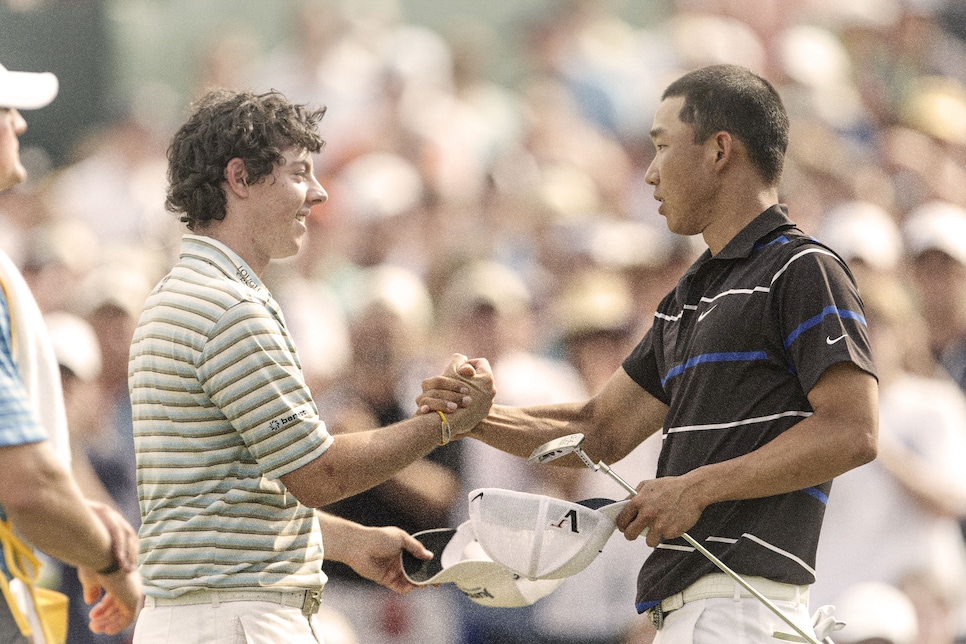
Paired with fellow rising star Anthony Kim, McIlroy bested his foe by nine shots (62 to 71).
McIlroy assembled a stunning 10-under-par closing score, his 62 beating the course record by two shots. It allowed him to sprint to a four-stroke victory over a stunned Mickelson. He beat the next best score, by Zimbabwean transplant Brendan de Jonge, by four strokes. And de Jonge was playing his home course, having taken up residence in Charlotte. De Jonge would later say he was rather pleased to par the final three holes, the difficult stretch known as “the Green Mile,” that gave him, he felt at the time, “an outside chance to win.”
He ended up more than just a bit outside.
That’s because McIlroy finished birdie-par-birdie as part of a closing kick in which he made 3s on the final six holes. The highlight of that stretch was an eagle he notched at the par-5 15th after a 352-yard tee shot and 206-yard 5-iron that ceased its journey three feet from the cup.
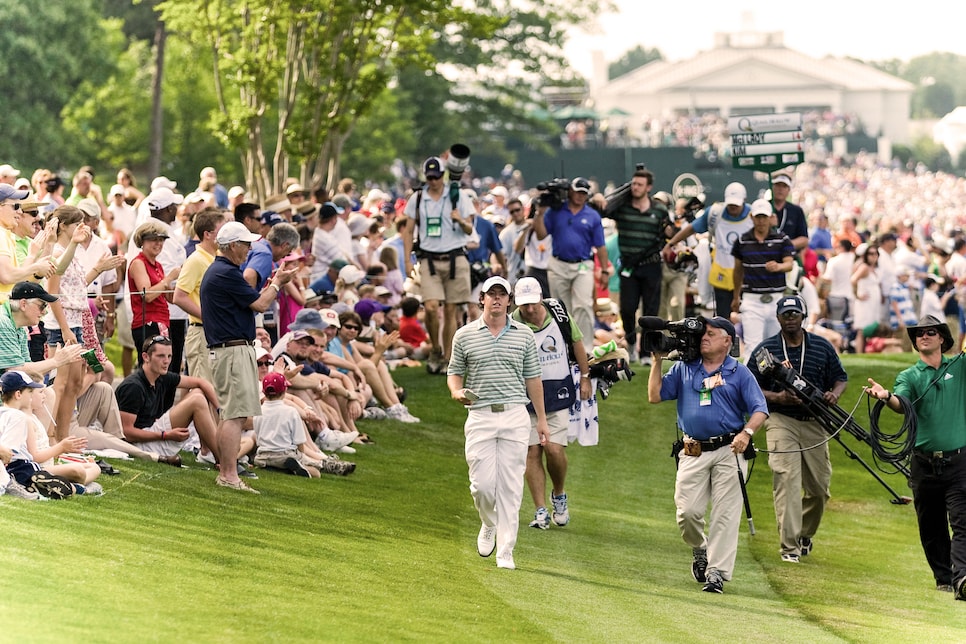
McIlroy’s strokes gained/total that Sunday (10.714) remains the best in a final round on the PGA Tour since the start of the ShotLink era in 2004.
“I shot 16 under par on the weekend around a golf course like this. You can’t get much more of a confidence boost than that,” he said after posting 15-under 273 to become the youngest winner on the PGA Tour since Tiger Woods in 1996. McIlroy played his final 39 holes in 18 under, about which he said, “I know that’s ridiculous.”
“He’s got the game of a veteran,” Mickelson said after coming home in 68 for solo second. “That 62 is one of the best rounds I’ve seen in a long, long time. He’s an amazing talent. [But] you just never expect something like 62.”

Mickelson praised McIlroy for his final-round performance: “He’s got the game of a veteran. That 62 is one of the best rounds I’ve seen in a long, long time. He’s an amazing talent.”
Indeed, according to the PGA Tour’s ShotLink data, McIlroy’s 10.714 strokes gained/total number for the round is the best final-round number of any player in any event since the tour began tracking the stat in 2004.
McIlroy had been living with outsized expectations since he finished as low amateur at the 2007 British Open at Carnoustie when he finished T-42. It now looked like he had not just arrived but was on his way to bigger things.
“There’s an awful lot of pressure on him,” noted fellow Irishman Padraig Harrington, who waited around at Quail Hollow to congratulate McIlroy after finishing nine shots back in a tie for seventh. “At home, no matter how he does, the focus is on him. All the way through Europe, it’s focus, focus, focus. When you’re not winning, when you’re not delivering, it becomes a burden. He’ll be a lot more comfortable with who he is now.”
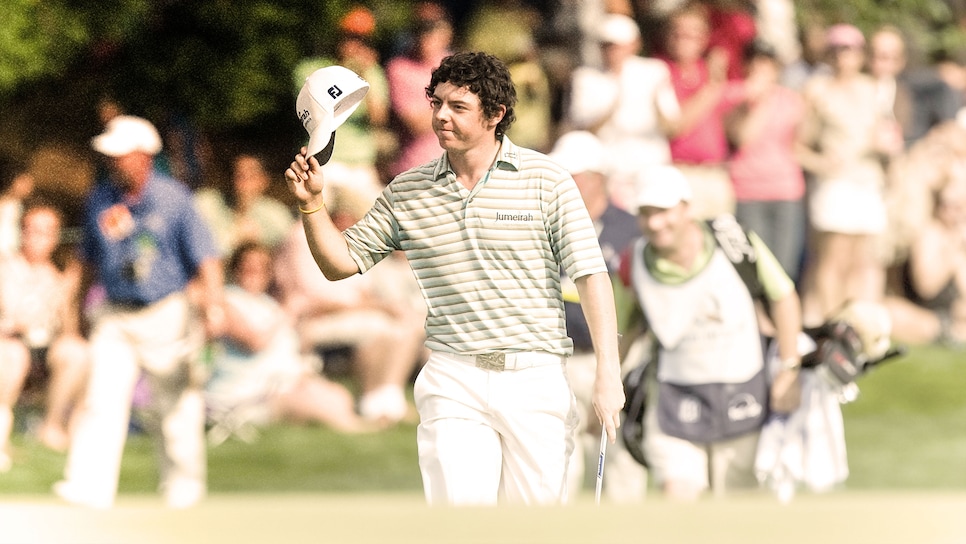
McIlroy’s victory in 2010 was the first of 29 PGA Tour titles and four wins at Quail Hollow.
It would be another 13 months before McIlroy truly began asserting himself. Questions persisted about his ability to close, especially after his final-round collapse in the 2011 Masters. But two months later, he captured the 2011 U.S. Open at Congressional Country Club with a record 16-under 268 total to win by eight strokes—the first of his five major titles.
PGA Championship 2025: Every player in the field at Quail Hollow Club (so far)
McIlroy returns to Quail Hollow having just become the sixth man to complete the career Grand Slam. A lot has changed for McIlroy in the intervening years, but one thing hasn’t. The focus will be on him. Focus, focus, focus.
Main Image: Supplied









